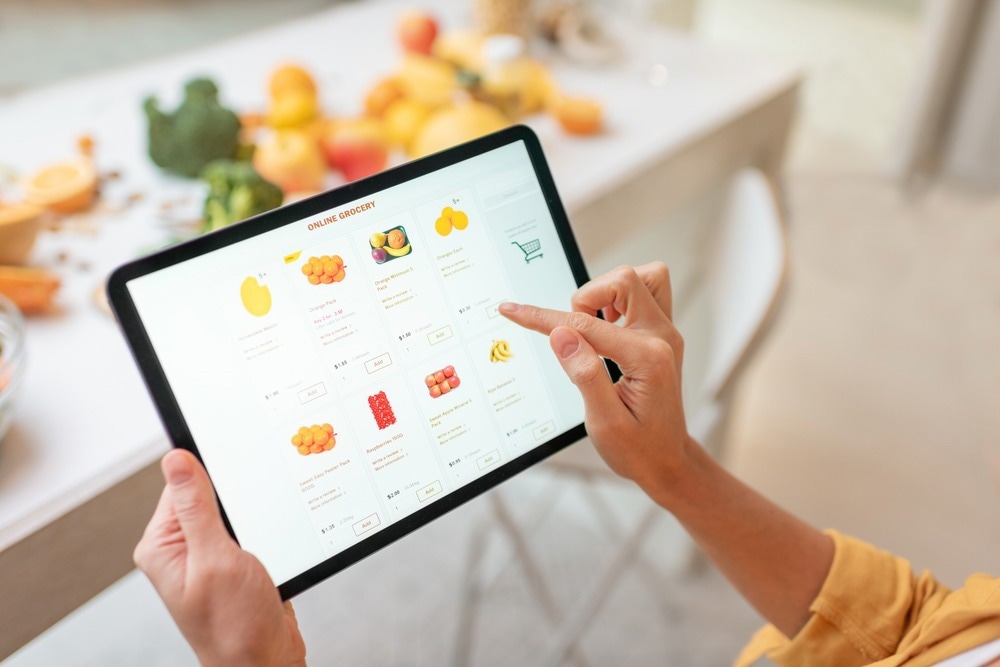Online grocery shopping: Are you getting the information you need?
A new study reveals a widespread lack of nutrition, ingredient, and misinformation at grocery stores, raising concerns about US public health and safety.

In a recent study published in the journal Public Health Nutrition, researchers in the United States of America (US) investigated the availability, availability, and accuracy of mandatory and voluntary food labeling information from major online food retailers of food products and US drinks.
They found that mandatory nutrition labels were present, accessible, and acceptable for only 35.1% of products, while voluntary marketing features were frequently present, with a significant difference in traders.
Rear end
The rapid growth of online shopping, accelerated by the coronavirus pandemic 2019 (COVID-19), far outpaces the development of regulatory requirements for nutrition labeling in this area.
Although the US Food and Drug Administration (FDA) rules mandate the prominent display of nutritional information in physical stores, these rules do not clearly address the online market, leaving it to vendors to provide such information.
Early studies suggest significant gaps in online compliance, with the availability of Nutrition Facts and other mandatory labels decreasing since the expansion of online food sales. In addition, marketers often prioritize voluntary, displayed marketing claims over mandatory nutritional information, but how these claims are presented in the online context is unclear.
Because of this gap in our understanding of online nutrition labeling, researchers in the current study examined the labeling of a full basket of common foods and beverages at major US online retailers.
About education
The researchers selected a food basket of 60 foods and beverages based on the USDA’s Thrifty Food Plan and other existing food baskets selected through a PubMed search. The items were divided into eight product groups. Tools such as Statista.com and the Rudd Center’s Snack FACTS Report were used to determine the normal ranges for each item.
Ten major online retailers, representing more than 79% of the US grocery market, were selected for analysis, including Amazon, Walmart, and Kroger, most of which are involved in the Food Assistance Program of Online Supplement. Each ingredient supplier was coded for the presence of seven optional labeling features, such as nutrient content and health claims. However, these data were not checked for availability or accuracy due to various regulatory requirements.
The data was collected from January to August 2022 by taking pictures of the object pages in different browsers. Each item sold was evaluated for four points mandated by the FDA: Nutrition Facts label, ingredient lists, allergen statements, and juice percentages, according to standards specific to reflect availability and accuracy.
Results and discussion
Mandatory nutrition labeling features were available an average of 35.1% of the time in online retailers, with specific availability rates varying by factor: 36.5% for ingredient lists, 35.9 % for allergen statements, 35% for juice, and 32.8% for Nutrition. Written information.
Notably, compliance varied greatly between vendors, with availability ranging from 2.4% to 89%. While 84.1% of the mandatory items were present on the data sheets, their availability dropped significantly to 35.2% when reading requirements were considered.
Voluntary writing items were the most common, appearing in 45.8% of the total items. Promotional statements emerged as the most frequently expressed voluntary factor, present in 83.7% of items. This information was found more often in the text of the web page (88.7%) than in images or packaging (76.1%). Among the various voluntary complaints, nutritional claims were present in 49.0% of items, while health and fitness claims were uncommon in 3.7%.
The presence of voluntary categories generally exceeded that of mandatory items across many product categories, particularly cereals (20.8% difference), bakery, confectionery and snacks (17.3%), and milk (16.6%). However, in the category of fruits and vegetables, there were more mandatory items (41.7%) than voluntary items (32.8%), mainly due to the low presence of advertising requests in that category .
Overall, the results highlight significant gaps in the provision of mandatory nutrition information in online shopping.
This study is strengthened by a comprehensive analysis of the basket of different foods from many suppliers, the use of validation methods, and the establishment of FDA regulations, which makes it the first to evaluate the mandatory components and of volunteering in the US online food retail environment after COVID 19.
However, the study is limited by its focus on the availability and accuracy of voluntary sectors, not being representative of all food items or vendors, and the exclusion of small, local vendors. internet.
We have seen many cases where a nutrition facts label, for example, that was only available after looking at a dozen pictures of the advertisement, actually forced consumers even who want that letter to interact with the marketing language. We cannot continue to let this sector grow without modern regulation,” the researchers said.
The end
Finally, the study showed that online food retailers do not provide clear, ordered nutritional information during the sale, unlike physical stores. This highlights the need for a coordinated industry and regulatory effort to ensure that consumers have access to important nutritional information when shopping online to inform their decisions.
#Online #grocery #shopping #information
